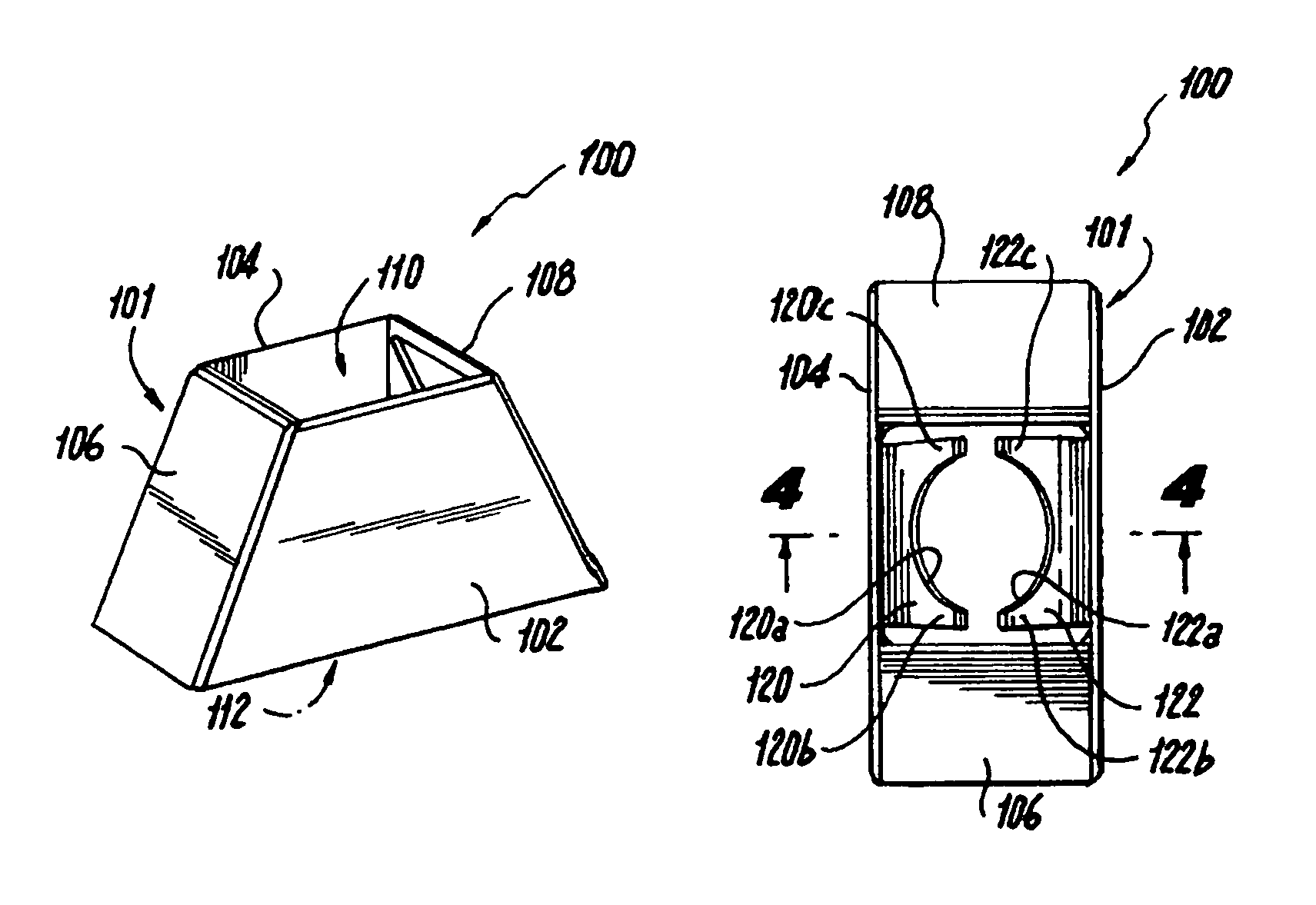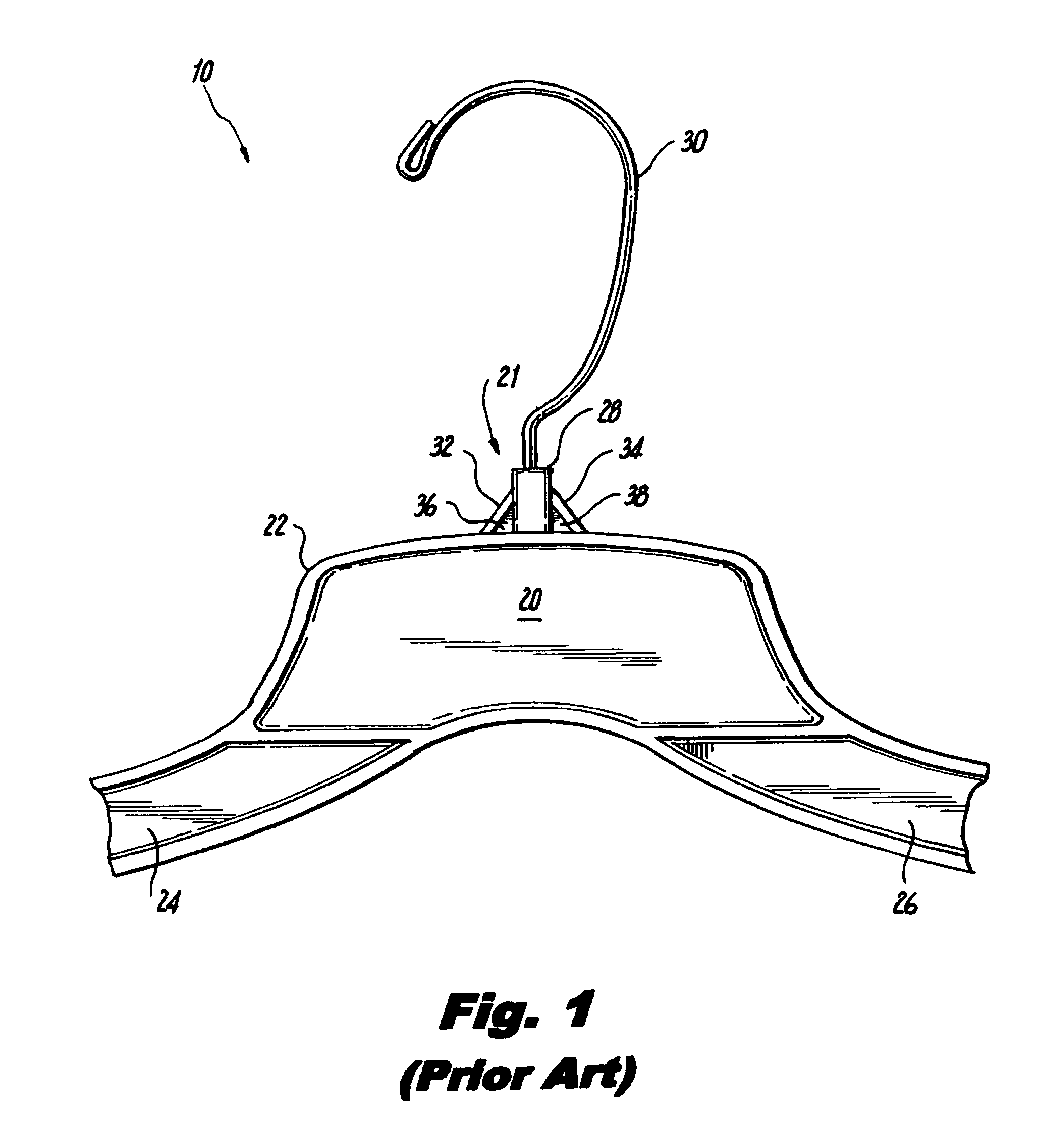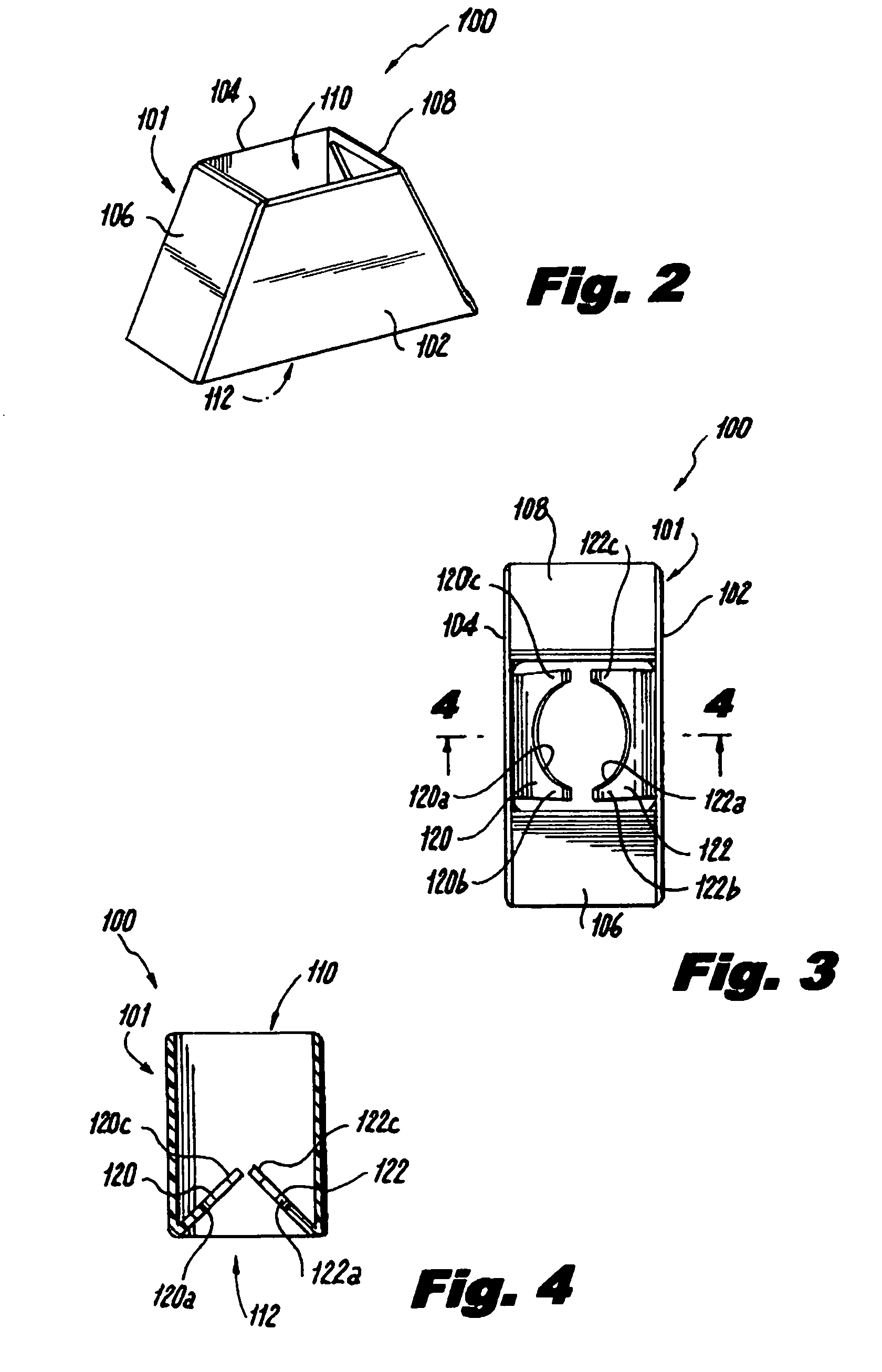Lower neck indicator for wire hook hangers
a technology of low-neck indicators and hangers, which is applied in the direction of identification means, show hangers, instruments, etc., can solve the problems of not securely engaging with the hanger, and achieving a desirable appearance, and achieve the effect of convenient mounting on the hanger
- Summary
- Abstract
- Description
- Claims
- Application Information
AI Technical Summary
Benefits of technology
Problems solved by technology
Method used
Image
Examples
first embodiment
[0025]Referring now to FIG. 2, illustrated in perspective view is a lower neck indicator or sizer, generally 100, according to the present invention. The indictor is predominantly, but not exclusively, used to indicate the size of a garment to be suspended from the hanger the indicator is mounted on. Throughout the specification, the term sizer shall be used interchangeably with indicator, without regard to whether its indica relates to a size or any other characteristic. Lower neck sizer 100 has a body 101 including a generally trapezoidal anterior wall 102 and a generally trapezoidal posterior wall 104. Lateral walls 106 and 108 connect the anterior wall 102 and posterior wall 104. Lower neck sizer 100 has an at least partially open upper surface 110 and an at least partially open lower surface 112, both to admit the hook 30 and at least the latter to admit lower neck 21 for mounting and use of the lower neck sizer 100.
[0026]Referring now to FIG. 3, illustrated is a top plan view ...
second embodiment
[0031]Turning now to FIG. 6, illustrated is a side view of a lower neck sizer 200 shown in FIG. 5. Tabs 242, 244 have an upward surface 242a, 244a, respectively, and downward surface 242b, 244b, respectively, either or both of which may be sloped relative to a transverse datum 250. In the exemplary embodiment shown, tabs 242, 244 have a generally flat upward surfaces 242a, 244a, relative to transverse datum 250, which provides additional resistance to removal. Downward surfaces 242b, 244b, are sharply sloped relative to transverse datum 250, which reduces resistance and aids in ease of engagement with body flange 22. Inversely, where upward surfaces 242a, 244a sloped downward, resistance to removal would be reduced. Sloping downward is considered as having a distal point of tabs 242, 244 below the point of attachment to extensions 202a, 204a, respectively. Similarly, a reduced or eliminated upward slope of downward surfaces 242b, 244b, would increase resistance to engagement with bo...
fourth embodiment
[0038]Lower neck sizer 400 also includes a plurality of substantially radial inwardly directed projections 470. At their mutual inward ends, projections 470 engage the wire hook 30 of the hanger 10. The inward ends 472 of projections 470 may be convex, as in the fourth embodiment, or may also be concave, or chamfered or sloped in any direction. With as few as two projections 470, concave ends lend stability to the fit between the projections 470 and the wire hook 30. Increasing numbers of projections aids stability and may obviate the need for concave ends.
[0039]Optionally, the lower neck sizer 400 can have a discontinuity 480 traversing the height of the tab body 401 to facilitate mounting to a hanger by admitting the wire hook 30. The discontinuity 480 need be only as wide as necessary to allow the lower neck sizer 400 to admit the wire hook 30, and in fact may be narrower than the wire hook 30 where the material selected for lower neck sizer 400 can elastically deform to admit th...
PUM
 Login to View More
Login to View More Abstract
Description
Claims
Application Information
 Login to View More
Login to View More - R&D
- Intellectual Property
- Life Sciences
- Materials
- Tech Scout
- Unparalleled Data Quality
- Higher Quality Content
- 60% Fewer Hallucinations
Browse by: Latest US Patents, China's latest patents, Technical Efficacy Thesaurus, Application Domain, Technology Topic, Popular Technical Reports.
© 2025 PatSnap. All rights reserved.Legal|Privacy policy|Modern Slavery Act Transparency Statement|Sitemap|About US| Contact US: help@patsnap.com



